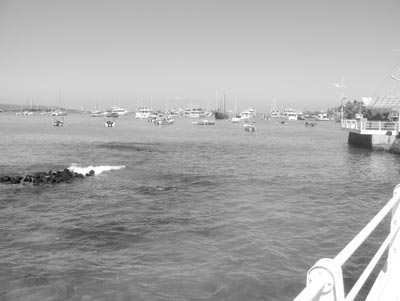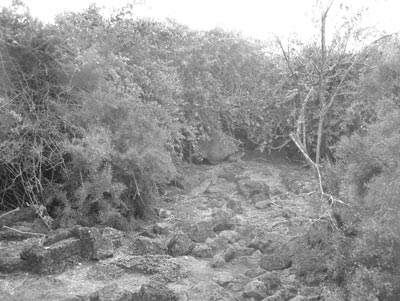The Galápagos: ‘overrated’
The claim is that on the Galápagos Islands you will see animals that are found nowhere else on Earth: marine iguanas, giant tortoises and thousands of birds, including red-billed tropicbirds, pink flamingos, storm petrels and penguins, not to mention whales, fish by the thousands, etc.
All of the articles on these islands say something like, “Savor the strangeness of the creatures on these desolate volcanic isles much as Charles Darwin did two centuries ago.”
A limited number of people is allowed onto the islands so that the animals will not be disturbed and will remain in their natural state of living.
Here is what I experienced on a 7-day trip in April ’07 aboard the 16-passenger Adventurer 2 with G.A.P. Adventures (225 Franklin St., 26th Fl., Boston, MA 02110; 800/676-4941, www.gapadventures.com). The trip cost around $5,000 for my wife and me.
Along with 500 people on three airplanes, we landed on one of the islands. I cannot imagine how many other planes landed that day.
On Santa Cruz Island we took a bus to Puerto Ayora, which has a population of over 22,000. In its harbor was our boat and 70-plus other boats. We could have walked across the harbor on boats.
In Puerto Ayora we went to the Charles Darwin Research Center. It was rundown and overgrown with vegetation, and we saw no personnel. The only tortoises that we saw on all of the islands were two in a pen that was overgrown with vegetation and had no water in the pool. The pictures in brochures and on TV show dozens of tortoises.
Every morning we woke up in a different cove on a different island. There were always from three to 10 other boats there. We toured each island with many other groups of people.
On the five islands that we visited, we saw about 20 frigate birds, 30 finches, 50 blue-footed boobies, five small penguins, 10 land iguanas and (from our Zodiac) six eagle rays but no flamingos and no whales. Snorkeling every day for four days, I saw a few fish (no tropical fish), one turtle, one penguin, three more eagle rays and many seals.
None of these were unique species that we could see nowhere else on Earth. Again, the brochures and TV shows show hundreds or thousands of these animals.
I did see a lot of seals on the beaches, but they were the normal seals you would see on many beaches in the world. As we live in Southern California, we see them every day on our beaches. I’ve seen more fish off our coast at home as well. And we have seen more unique and different birds, plants and fish at many other places on this Earth.
From what I saw of the six islands we visited out of the major 13, the Galápagos Islands are just volcanic islands nearly devoid of vegetation or animals.
We ended up in the islands’ capital, Puerto Baquerizo Moreno on San Cristóbal. Again, the town had over 7,000 people and the harbor was full of boats. In fact, we were informed that cruise lines were now coming to the Galápagos with 100 or more people on each ship.
In addition, the brochures and travel companies state that the islands are only a level-2 difficulty. We found that if you are over 60 and not in perfect health, this trip would be extremely difficult. Many times a day we had to get off and onto Zodiac boats and climb up and down volcanic rock onto islands to tour. Most of the islands were rocky and hazardous to walk on.
We did enjoy flying out to these volcanic islands 600 miles off the west coast of Ecuador; cruising on an excellent yacht for five days; touring Quito, Ecuador, and meeting wonderful people and partying with them for a week.
BOB SEFING
San Diego, CA


